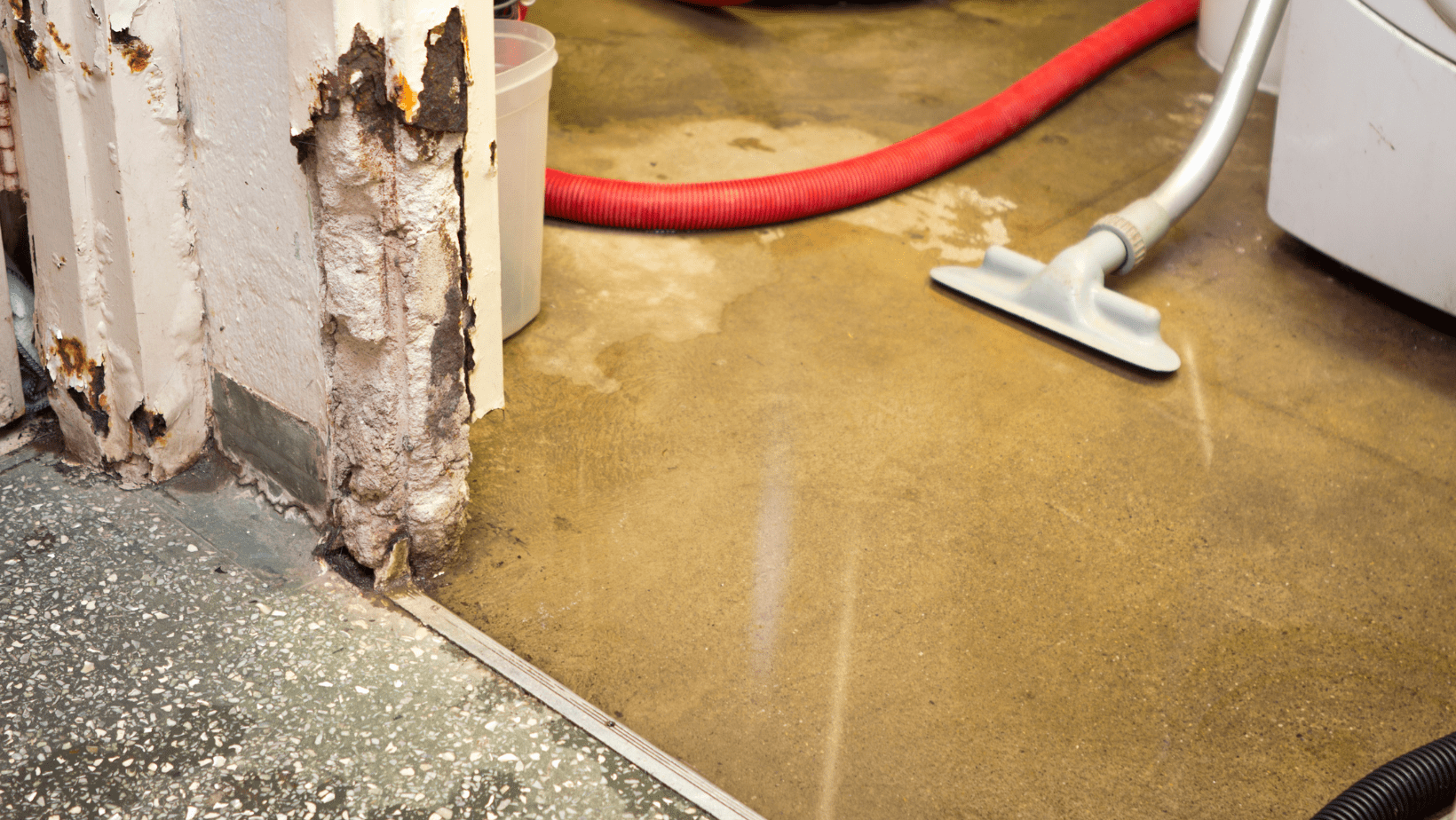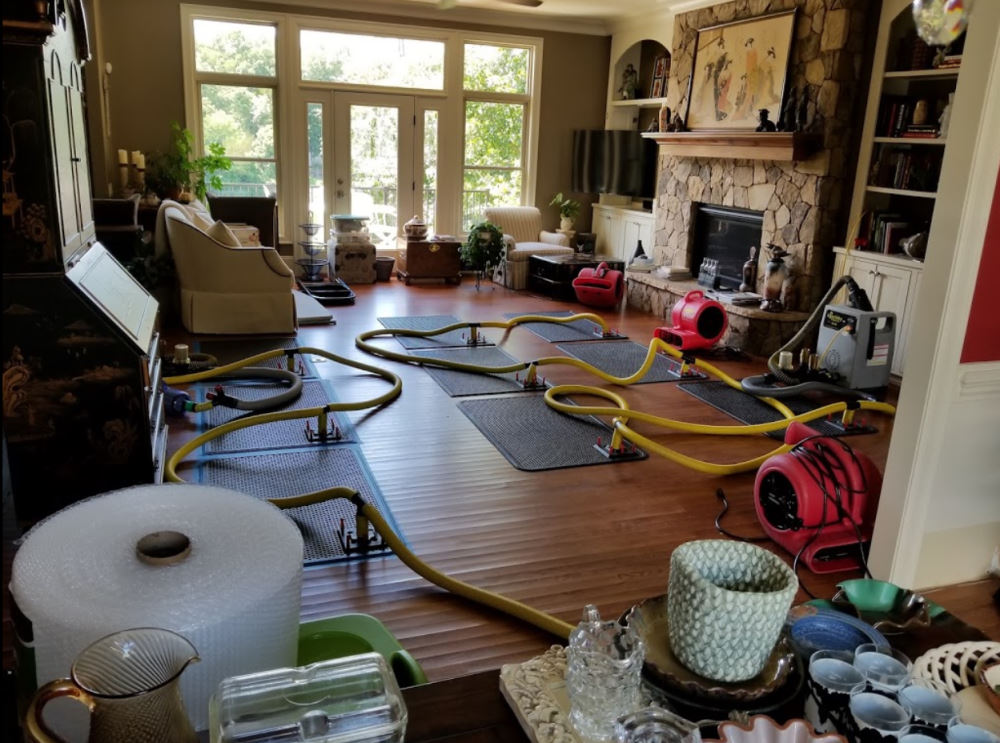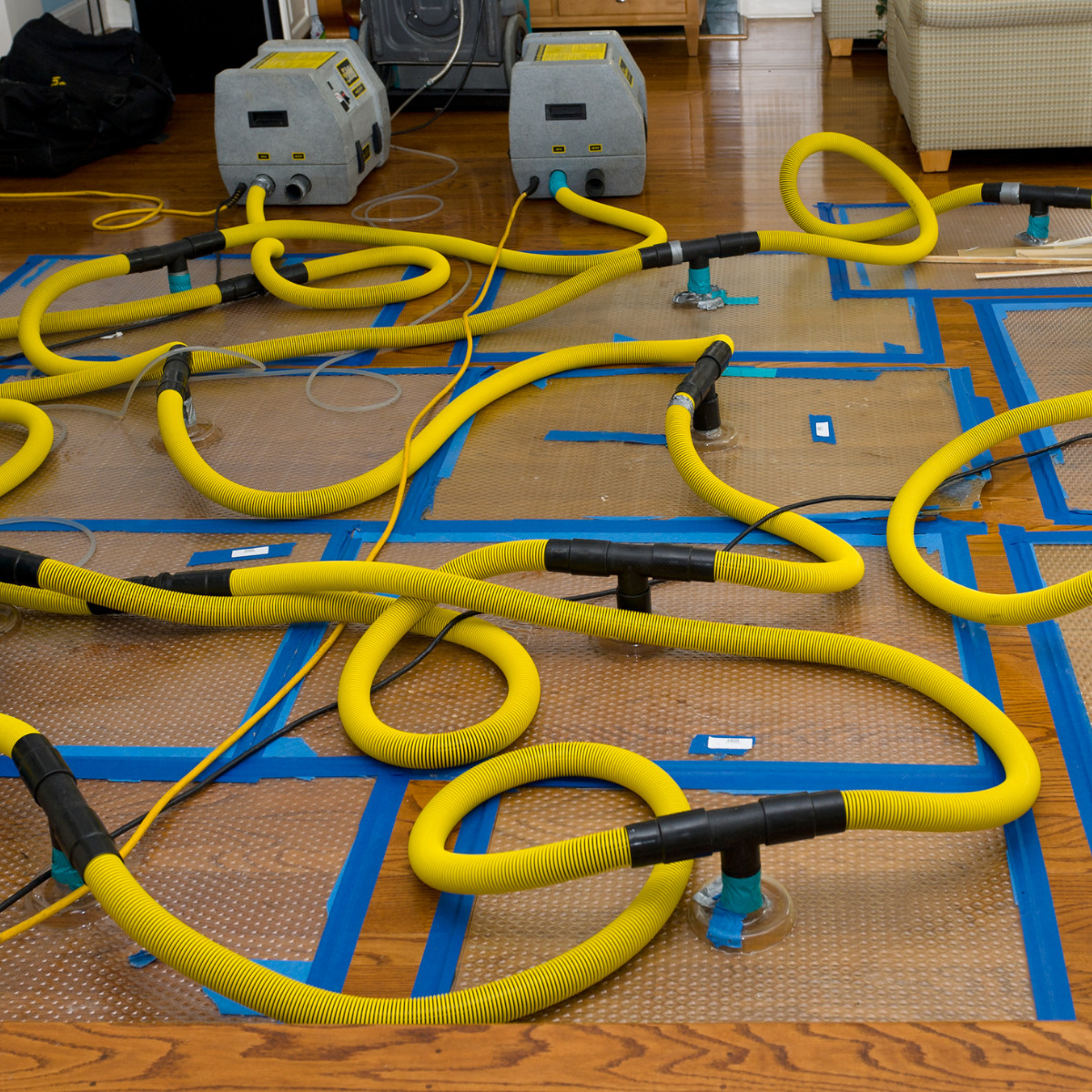DIY vs. Professional: When to Call Experts for Water Damage Cleanup
Essential Steps to Adhere To for Efficient Water Damage Reconstruction in your house
When faced with water damage in your home, recognizing the essential steps for effective repair can make all the distinction. You need to examine the damages and assurance security prior to dealing with the problem. Quiting the source of water is essential, yet it's just the start. There's a collection of actions you must take to shield your building from more problems when you've taken care of that. Allow's discover what you ought to do next.
Evaluate the Damage
The first action is to examine the damage completely when you discover water damage in your home. Begin by identifying the resource of the water invasion. Check for leakages, ruptured pipes, or various other issues triggering the trouble. Next, examine the impacted locations for visible indicators of damage, consisting of bending, discoloration, or mold growth. Don't fail to remember to search in hidden areas like behind wall surfaces or under floor covering, as water can seep into these areas unnoticed.Document the damage by taking clear pictures and notes. When discussing the situation with your insurance coverage supplier or reconstruction specialists, this will help you. Focus on the type of materials impacted, as different products call for various reconstruction approaches. Finally, evaluate the extent of the damage. Is it substantial or small? Recognizing the range will certainly assist you in making a decision whether to handle it yourself or hire the experts for an extra considerable reconstruction procedure.

Guarantee Safety and security
Prior to you begin any kind of reconstruction job, guaranteeing your safety is vital. Analyze the problem of your home. If the water's deep or if you notice electrical hazards, don't enter the area. Switch off the electrical power and gas supply to stop crashes. Use safety equipment like boots, masks, and gloves to shield on your own from impurities or mold.It's essential to remain knowledgeable about your environments; expect sharp items and slippery surface areas. Treat it as harmful waste if the water is from a sewer back-up. Keep children and family pets away from influenced locations to avoid exposure.Once you have actually taken these preventative measures, you can continue with the restoration procedure. Keep in mind, your safety comes initially, and if you're ever unsure, it's ideal to consult a specialist. Taking these steps will certainly help assure you're prepared to deal with the reconstruction securely and successfully.
Quit the Source of Water
After ensuring your security, the next step is to quit the resource of water. Identify where the leakage is coming from. It could be a burst pipeline, a defective device, and even hefty rain entering through a harmed roof. Transform off the primary water supply to your home to avoid further flooding if it's a plumbing issue. For appliances, disconnect them and shut down their water valves.If the source is outside, like rainwater, attempt to divert it away from your home utilizing sandbags or other barriers. For minor leakages, you could be able to utilize tape or a sealant momentarily until a specialist can fix it. Keep in mind, resolving the source swiftly is vital to minimizing damages and preventing mold and mildew growth. When you have actually stopped the water, you'll remain in a better placement to proceed to the following action in the reconstruction process.

Get Rid Of Excess Water
Act promptly to get rid of excess water, as standing water can bring about extra extensive damage and mold development. Gather your devices: a wet/dry vacuum cleaner, buckets, and towels. If the water is shallow, you can utilize towels to saturate up the dampness. For much deeper water, a wet/dry vacuum cleaner is your finest wager. See to it to empty the vacuum regularly to prevent overflow.If the water is polluted, like from a sewage backup, put on safety gear, consisting of masks and gloves, to keep on your own risk-free. Once you have actually removed as much water as feasible, examine for concealed pockets of wetness in corners and under furnishings, as these can nurture mold.Don' t fail to remember to turn off electrical devices and power outlets in wet locations to avoid dangers. This initial step is essential in reducing damages and setting the stage for a successful remediation process.
Dry and Dehumidify the Area
It's essential to dry and evaporate the location thoroughly as soon as you've removed the excess water. Begin by utilizing dehumidifiers effectively to draw moisture out of the air and stop mold and mildew growth. Keep an eye on humidity levels to guarantee the room dries entirely.
Get Rid Of Standing Water
To effectively deal with water damage, you need to concentrate on getting rid of standing water as promptly as feasible. Beginning by collecting needed tools, like a wet/dry vacuum or a pump, depending on the volume of water. A vacuum should do the trick if the water is superficial. For bigger quantities, a pump is a lot more effective. While functioning, make sure to use protective gear to maintain on your own risk-free from pollutants. As you eliminate the water, focus on hidden areas like under furnishings or in edges where water may collect. Your room will certainly start to dry out when you've gotten rid of the majority. This step is necessary, as sticking around water can bring about mold and mildew development and a lot more considerable damages.
Usage Dehumidifiers Successfully
Just how can you effectively use dehumidifiers to dry and evaporate your space? Begin by placing your dehumidifier in the most affected location, ideally where water damage is most severe. Ensure to shut all doors and windows to produce a sealed environment. Switch on the dehumidifier and established it to the ideal moisture level, typically around 30-50%. Vacant the water collection storage tank frequently, or take into consideration utilizing a model with a continual water drainage option for convenience. Preferably, make use of fans to enhance air movement, helping the dehumidifier job a lot more effectively. Keep the dehumidifier running till you're positive that the area is extensively dried out, protecting against mold development and additional damages (Flood Damage Restoration). This step is necessary for effective water damages imp source restoration
Display Moisture Levels
Tracking moisture degrees is important throughout the drying out process, as it helps ensure your room remains devoid of excess dampness. Purchase a trusted hygrometer to track humidity accurately. Ideally, you wish to keep degrees between 30% and 50%. You might need to readjust your dehumidifiers or fans to improve air flow if moisture analyses climb over this array. Examine the analyses frequently, especially in areas susceptible to moisture, like bathrooms or basements. Consider increasing air flow or using added dehumidifiers if you see relentless high website link humidity. Staying on top of these degrees not only accelerates the drying out process but also stops mold and mildew growth, guaranteeing your home stays safe and comfy.
Clean and Disinfect Affected Surfaces

Restore and Fix Your Home
After cleansing and disinfecting the affected locations, it's time to bring back and fix your home. Begin by reviewing the damages. Look for architectural problems, like compromised floors or walls, and address any kind of necessary repairs. Changing harmed drywall or flooring is essential for both aesthetic appeals and safety.If your furniture or belongings were affected, consider whether they can be recovered or require substitute. Tidy or expertly bring back items where possible.Next, touch and repaint walls up any locations that require interest. This not only boosts look but additionally protects surfaces from future water damage.Don' t forget to inspect your pipes and devices for leakages, guaranteeing whatever's working correctly. Consider installing a dehumidifier to avoid future moisture problems. By taking these actions, you'll restore your home to its previous glory and create a much safer living setting.
Frequently Asked Concerns
Just How Lengthy Does Water Damage Remediation Commonly Take?
Water damage remediation normally takes anywhere from a couple of days to numerous weeks, depending on the degree of the damage (Flood Damage Restoration). You'll wish to examine the scenario quickly to minimize further problems and ensure appropriate repair
Will My Insurance Policy Cover Water Damages Reconstruction Prices?
Your insurance policy could cover water damages remediation prices, yet it relies on your plan. Inspect your protection details and contact your insurance coverage agent to clarify what's included and what you need to file an insurance claim.
Can I Deal With Water Damage Remediation Myself?
You can take care of water damages reconstruction on your own, however it's vital to assess the scenario. You could desire to call experts if it's extensive. Constantly prioritize safety and assure you've got the right devices.
What Are the Indications of Hidden Water Damage?
You could discover signs of surprise water damage like warped wall surfaces, moldy odors, or staining. If your floors really feel mushy or you spot mold and mildew, it's time to examine further prior to the situation gets worse.
Just How Can I Avoid Future Water Damages in My Home?
To avoid future water damages in your home, you must regularly check plumbing, seal fractures, maintain rain gutters, and guarantee correct drainage. Mounting a sump pump and moisture obstacles can additionally assist keep your area completely dry. When you find water damage in your home, the first action is to evaluate the damage completely. Act quickly to eliminate excess water, as standing water can lead try these out to extra substantial damages and mold development. To efficiently deal with water damages, you need to focus on eliminating standing water as quickly as possible. As you eliminate the water, pay focus to hidden areas like under furniture or in corners where water could collect. Water damage reconstruction typically takes anywhere from a few days to a number of weeks, depending on the level of the damages.